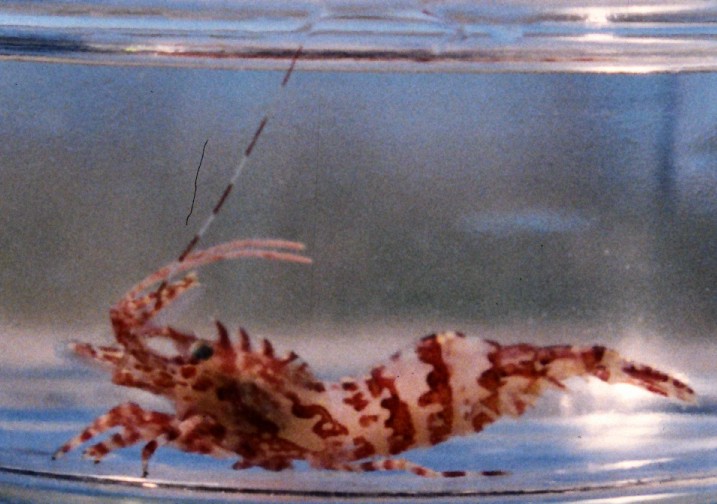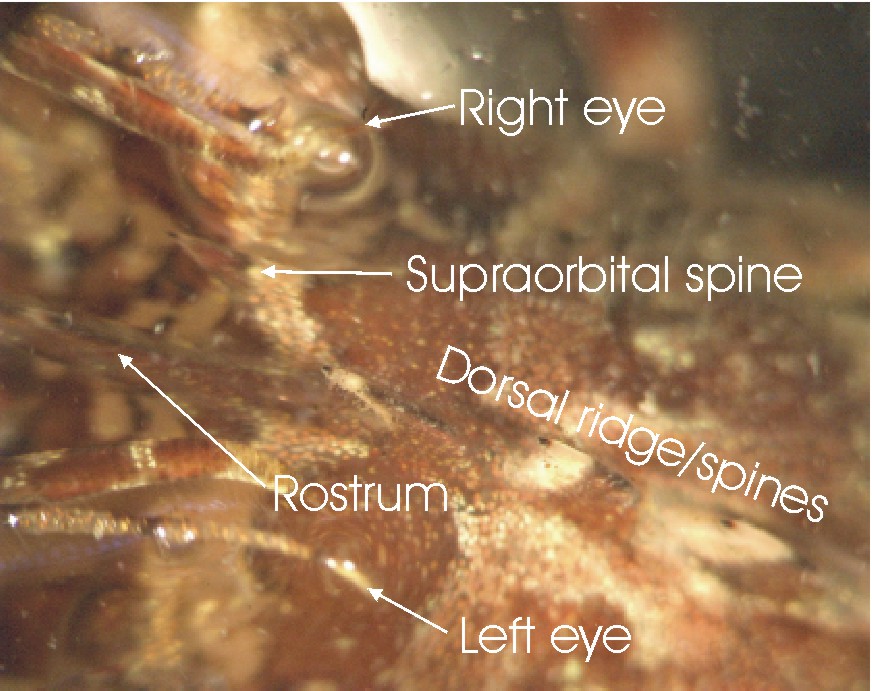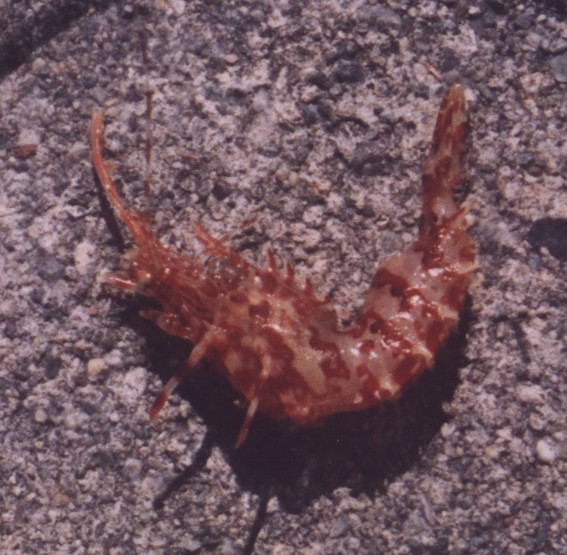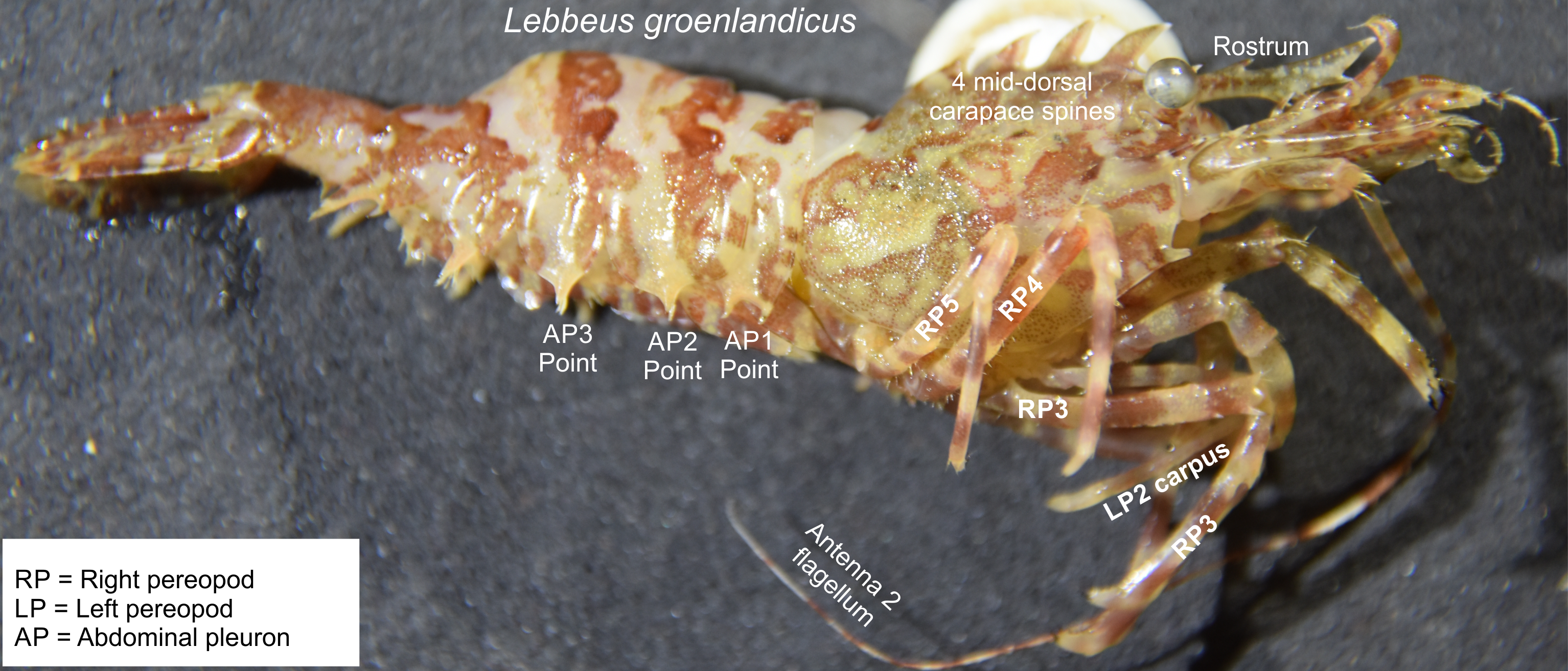Lebbeus groenlandicus (Fabricius, 1775)Common name(s): Spiny lebbeid |
|
| Synonyms: |  |
| Phylum Arthropoda
Subphylum Crustacea Class Malacostraca Subclass Eumalacostraca Superorder Eucarida Order Decapoda Suborder Pleocyemata Infraorder Caridea Family Hippolytidae (broken-back shrimp) (Now in family Thoridae) |
|
| Lebbeus groenlandicus from 100 m depth in San Juan Channel. Length about 2.4 cm. | |
| (Photo by: Dave Cowles, July 2002) | |
How to Distinguish from Similar Species: We often catch this species in the same deep San Juan Channel otter trawls as Paracrangon echinata. The two species look superficially similar but Paracrangon has only 4 walking legs, is not as strongly red, has a longer rostrum, and typically assumes a defensive cataleptic posture when threatened. Several other Lebbeus species have rounded ends on the pleura of abdominal segments 2 and 3.
Geographical Range: Circumboreal. Bering Sea to Puget Sound in our area.
Depth Range: Very low intertidal (juveniles) to 518 m
Habitat: Soft bottoms with sand, gravel, and shells
Biology/Natural History:
| Return to: | |||
| Main Page | Alphabetic Index | Systematic Index | Glossary |
References:
Dichotomous Keys:Kozloff 1987, 1996
Wicksten, 2009
General References:
Jensen,
1995
Scientific Articles:
General Notes and Observations: Locations, abundances, unusual behaviors:

This closeup dorsal view of the head (the animal is facing to the left) shows the supraorbital spines. Lebbeus groenlandicus has one supraorbital spine between the eye and the rostrum.

Lebbeus groenlandicus sometimes assumes this cataleptic
posture when disturbed, but seems less prone to do so than is Paracrangon
echinata.
Photo by Dave Cowles, July 2000

Photo by Dave Cowles, July 2008. Note the brown and
white bands
on the body and antennae.
This adult female is from the Sea of Okhotsk, Russian Far East. Photograph taken by Andrey Gontchar of the Russian Federal Research Institute of Fisheries and Oceanography (VNIRO). It was captured May 9, 2008 at a depth of 235 m near the coast of southwestern Kamchatka.

Some of the anatomical landmarks on Lebbeus groenlandicus. Photo by Dave Cowles, July 2023
Authors and Editors of Page:
Dave Cowles (2005): Created original page
